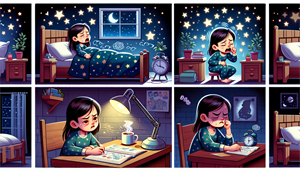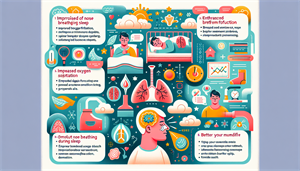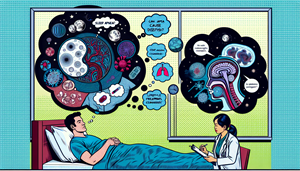
Recognizing the Signs of Pediatric Sleep Apnea
Pediatric sleep apnea, a type of obstructive sleep apnea, is an obstructive sleep-related breathing disorder characterized by interruptions in a child’s breathing while sleeping.
This condition can disrupt a child’s breathing due to an obstruction in the airway or a lack of coordination between the brain and the breathing muscles. The initial step towards having obstructive sleep apnea diagnosed in children, also known as pediatric sleep apnea, is to identify its signs.
This includes careful observation of your child’s sleep patterns and daytime behaviors for any potential symptoms.
Nighttime Indicators
Nighttime is when the signs of pediatric sleep apnea become most apparent. It begins with loud snoring, which, while common in adults, is not typical in children and could indicate the presence of sleep apnea or enlarged tonsils and adenoids.
But snoring alone is not a definitive indication of sleep apnea. Choking, gasping for air, and pauses in breathing are more indicative of serious problems.
These pauses in breathing can occur as frequently as 20 to 30 or more events per hour of sleep. It’s not the occasional snort or snuffle that you need to be worried about - it’s the persistent, disruptive breathing patterns that signal a potential sleep-related breathing disorder.
Daytime Clues
While the nighttime indicators of pediatric sleep apnea are evident, the daytime clues are just as important. A child with sleep apnea may appear excessively sleepy during the day, struggle to concentrate, and perform poorly in school.
These signs may be easily mistaken for other medical or behavioral problems, leading to misdiagnosis. Daytime irritability, in particular, can manifest as: difficulties in concentration, hyperactivity, aggression, and mood swings.
These behavioral challenges are frequently attributed to the disrupted and non-restorative sleep associated with sleep apnea, often leading to restless sleep. Identifying these daytime indications is vital for diagnosing sleep apnea and starting an appropriate treatment regimen.
Decoding the Diagnosis Process
When it comes to diagnosing pediatric sleep apnea, sleep studies and consultations with sleep specialists are key. An overnight sleep study, or polysomnogram, is the most accurate method for diagnosing sleep apnea in children.
It monitors their brain waves, heartbeat, and breathing activity during sleep. Seeking the advice of sleep specialists guarantees precise diagnosis and an efficient treatment approach.
The Role of Sleep Studies
Sleep studies are instrumental in diagnosing sleep apnea in children. These diagnostic tests, including polysomnography (PSG), pediatric sleep study, and electroencephalogram (EEG), monitor the child’s brain waves, eye movements, heart rate, breathing patterns, and oxygen levels during sleep.
The findings of a sleep study are then analyzed by medical professionals to determine the presence and severity of sleep apnea, leading to a tailored treatment plan.


